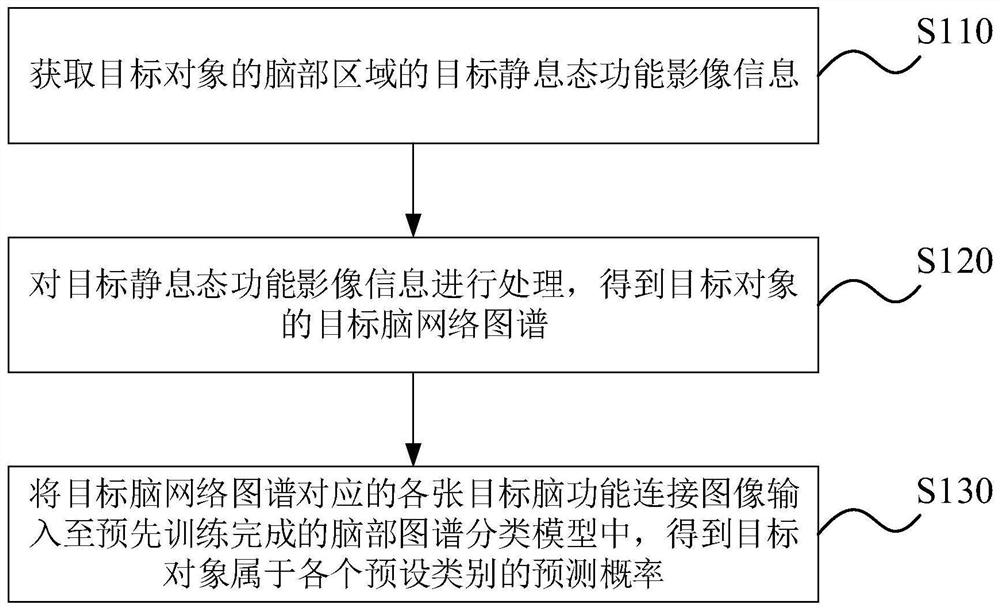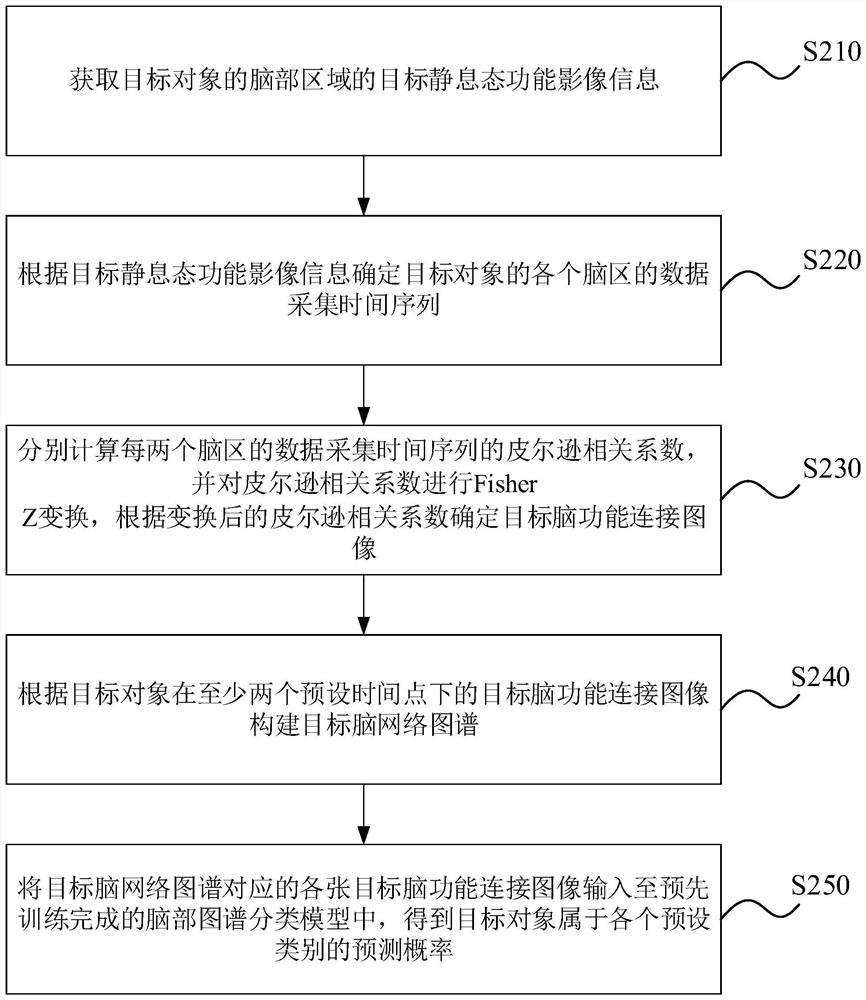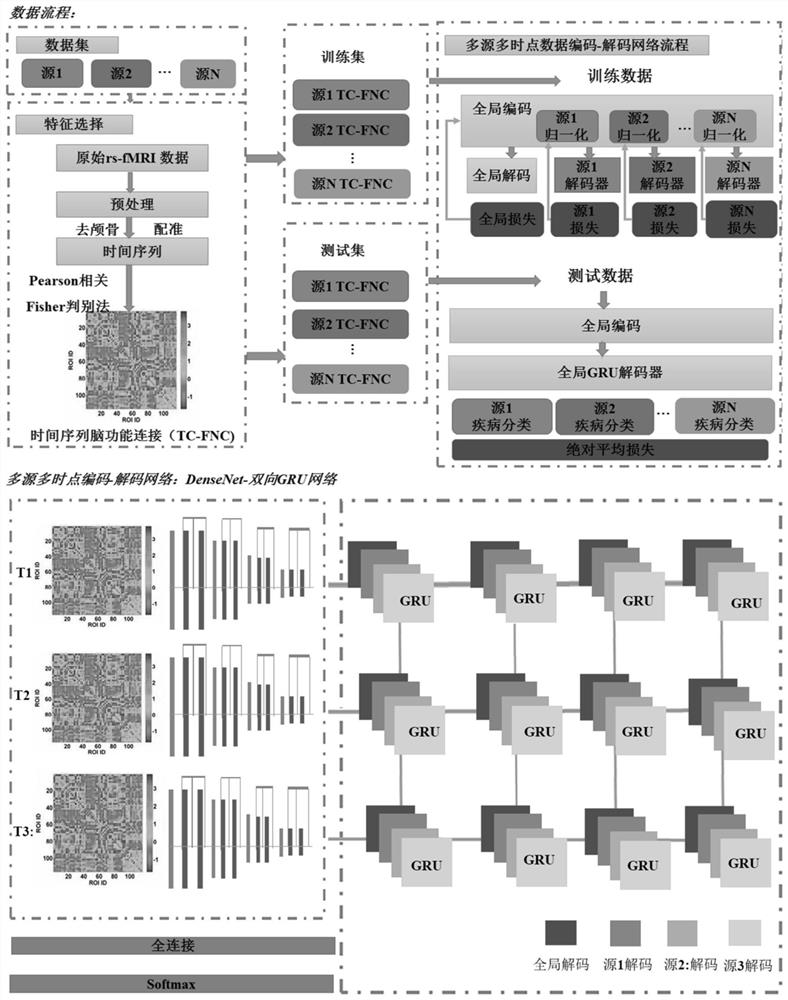Brain image classification method and device, electronic equipment and storage medium
A classification method and brain technology, applied in the field of image processing, can solve the problems of small sample size, large heterogeneity, low signal-to-noise ratio, etc., and achieve the effects of assisting diagnosis and improving prediction accuracy
- Summary
- Abstract
- Description
- Claims
- Application Information
AI Technical Summary
Problems solved by technology
Method used
Image
Examples
Embodiment 1
[0029] figure 1 It is a schematic flowchart of a brain image classification method provided by Embodiment 1 of the present invention. This embodiment is applicable to the situation of classifying brain images at multiple time points. Classification device, which can be implemented by software and / or hardware, and can be configured in a terminal and / or server to implement the brain image classification method in the embodiment of the present invention.
[0030] Such as figure 1 As shown, the method in this embodiment may specifically include:
[0031] S110. Acquire target resting-state functional image information of the brain region of the target subject.
[0032] Wherein, the resting state functional image information of the target is obtained based on resting state functional magnetic resonance imaging technology.
[0033] In the embodiment of the present invention, the target resting state functional image information can be understood as the image information obtained a...
Embodiment 2
[0062] figure 2 It is a schematic flow chart of a brain image classification method provided in Embodiment 2 of the present invention. On the basis of the above technical solution, this embodiment further refines the technical solution. In this embodiment, on the basis of any optional technical solution in the embodiments of the present invention, optionally, the processing of the target resting-state functional image information is performed to obtain the target brain network map of the target object, including : according to the target resting state functional image information, determine the data acquisition time series of each brain region of the target object; calculate the Pearson correlation coefficient of the data acquisition time series of every two brain regions respectively, and compare the Pearson The correlation coefficient is subjected to Fisher Z transformation, and the target brain functional connection image is determined according to the transformed Pearson ...
Embodiment 3
[0078] image 3 It is a schematic diagram of the network training process of a brain image classification method provided by Embodiment 3 of the present invention, Figure 4 It is a schematic diagram of the construction process of the target brain functional connection image in a brain image classification method provided by Embodiment 3 of the present invention; the embodiment of the present invention is a preferred embodiment of the above-mentioned invention embodiments, as image 3 As shown, the network training process in the embodiment of the present invention may include a data processing process, a network training process, and a network testing process.
[0079] First, the original Resting-State Functional Magnetic Resonance Imaging (RS-FMRI) information from different data sources is obtained, where different data sources can be represented by source 1, source 2, ..., source N, etc.; then, Enter the data processing process, perform preprocessing operations such as sk...
PUM
 Login to View More
Login to View More Abstract
Description
Claims
Application Information
 Login to View More
Login to View More - R&D Engineer
- R&D Manager
- IP Professional
- Industry Leading Data Capabilities
- Powerful AI technology
- Patent DNA Extraction
Browse by: Latest US Patents, China's latest patents, Technical Efficacy Thesaurus, Application Domain, Technology Topic, Popular Technical Reports.
© 2024 PatSnap. All rights reserved.Legal|Privacy policy|Modern Slavery Act Transparency Statement|Sitemap|About US| Contact US: help@patsnap.com










